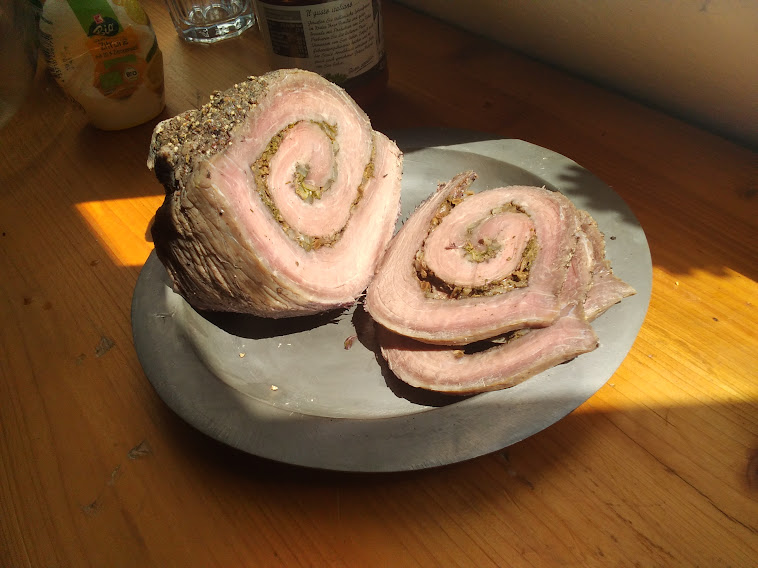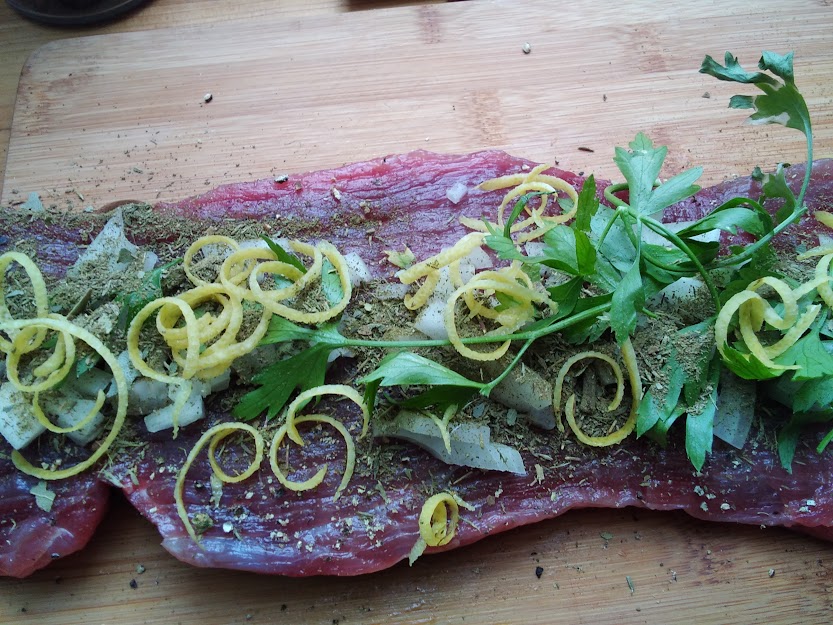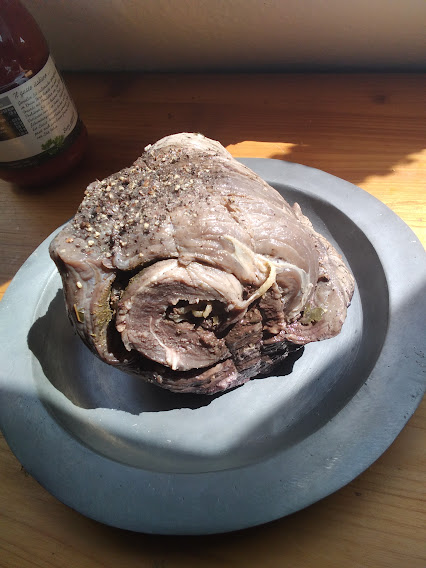
Still dealing with the aftermath of the virus, so I apologise for missing out on yesterday’s recipe. Today, I want to share the experiment I did this week. It’s a seventeenth-century recipe recorded in the Brandenburgisches Kochbuch of 1723 (which is itself a pirated edition of Die wohl-unterwiesene Köchin by Maria Sophia Schellhammer). The book itself deserves a closer study than I can give it here, but the recipe is interesting on its own. It is in part two of book one, chapter five, entry 22:
Rolled Beef which is a Fine Dish
Take a piece of meat that is thin and from the belly. Salt it after you have beaten it well and strewed it with saltpeter on both sides. After it has lain for two days, you must water it once. Then remove the skin from one side. Strew this side with bay leaves cut small, lemon peel, thyme, onions, parsley, pepper, cloves, and mace. Roll it up as long as it is, and when it is rolled up, tie three sticks firmly to it with string so that it can just about be stuck into the pot. Then lay it in, add a Quartier (measure) of red wine, a little vinegar, and whole spices. Glue the pot shut and let it cook for 4 to 5 hours. Serve it cold, in slices.
The German cuisine of the seventeenth and eighteenth centuries tends to be underestimated, often reduced to a poor copy of French à la mode. Sometimes this happens, but there is a lot of interesting development happening that we should not ignore, and the recipes are often tasty. This is a very substantial dish. Few quantities are given, but starting off with the belly flap of a whole cow or ox sets the tone. The ‘pot’ it is supposed to be suspended in by sticks wedged between the walls is also likely a large, rounded cauldron, not a small saucepan. Being alone at home, I went with a smaller quantity of 1.5kg of beef which I dry-salted and kept in the salt for two days. I did not use saltpeter because it is difficult to source in Germany and potentially hazardous to health, but I imagine it would have produced a more appetising pink colour if I had.

After two days, I watered the beef, cut it open lengthwise, trimmed the ends and proceeded to apply the spice mixture. I was apprehensive that using no salt might make it insipid, but there was more than enough of that left even after a night’s soaking. I coarsely broke up the bay leaves, ground the cloves and mace, finely chopped the onions, and tore the parsley leaves. If I get around to trying this again, I think I will try rendering it all into a paste to see if it produces better adhesion between the meat layers. The flavour was just fine.
A Quartier of wine around 1700 would be about a litre (regionally anywhere between 900 and 1200 ml), but given the size of the meat described here, it sounds as though the cooking is supposed to happen suspended in or over the liquid, not covered completely. I therefore bought an 0.33l bottle of wine and suspended the meat over an improvised rack of chopsticks. Then I added two tablespoons of vinegar and a few whole cloves and bay leaves (my guess as to the ‘whole spices’ and closed the lid. Since I cooked it in a heavy cast-iron pot, I did not use water paste to close the lid, hoping enough steam would remain inside. After four hours simmering on a low heat, I switched it off and let it cool.

The next morning, I cut open the strings and sliced the beef. It was firm and held together well despite the fact I had not pressed it. The taste is very satisfactory, rich, salty and spicy without being overwhelming. I had a sandwich with sweet mustard. The consistency is a little too much on the chewy side, something that more beating and possibly the saltpetre may remedy. I am keeping the piece in my fridge for more slices to eat on bread, but will probably freeze a chunk to see if that works and also because I don’t want to eat just one kind of cold cut all week. Altogether, I declare this experiment a success.
